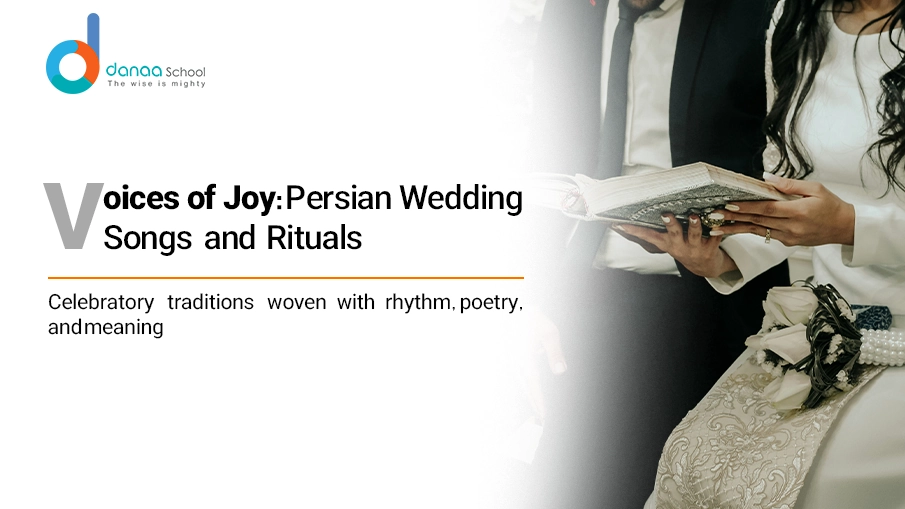Traditional Persian Wedding Songs and Customs
A Persian wedding is a grand cultural celebration filled with music, dance, and deep-rooted traditions. From engagement ceremonies to the wedding reception, each stage is accompanied by symbolic rituals and traditional Persian wedding songs passed down through generations.
The Importance of Music in Persian Weddings
Music plays a central role in Persian weddings, setting a joyful and emotional atmosphere. Traditional Persian wedding music expresses love, happiness, and blessings for the newlyweds. While styles vary by region, common traditional instruments include:
- Daf – a traditional Persian drum
- Ney – a Persian reed flute
- Setar – a traditional stringed instrument
- Santur – a hammered dulcimer
These instruments create the lively and meaningful soundscape that defines traditional Persian wedding celebrations.
Traditional Persian Wedding Songs
Persian wedding songs often feature poetic lyrics celebrating love, unity, and prosperity. Some of the most well-known traditional wedding songs include:
Mobarakeh Bâsh
Mobarakeh Bâsh means “May it be blessed.” This joyful song is traditionally played during the wedding ceremony and reception to wish happiness and good fortune to the couple.
Baroon Barooneh
Baroon Barooneh is a beloved Persian folk song symbolizing renewal, blessings, and new beginnings, making it a popular choice for wedding celebrations.
Aroosi Aroosi
This festive song celebrates the bride (aroos) and the joy of marriage, expressing excitement and happiness for the couple’s future.
Gol Gandom
Gol Gandom symbolizes fertility and prosperity and is sometimes played during the Sofreh Aghd ceremony as a blessing for the couple.
Key Persian Wedding Customs
Persian weddings are rich in symbolic customs representing love, unity, and prosperity. Some of the most important traditions include:
Khastegari (Proposal Ceremony)
Khastegari is a formal proposal ceremony where the groom’s family visits the bride’s family to request marriage. Traditional Persian tea and sweets are served while families discuss the union.
Baleh Boran (Engagement Ceremony)
Baleh Boran marks the official engagement. The groom’s family brings gifts such as jewelry, sugar cones, and decorative fabrics to symbolize happiness and prosperity.
Sofreh Aghd (Wedding Ceremony Table)
The Sofreh Aghd is a symbolic ceremonial spread placed before the couple during the wedding. It traditionally includes:
- Mirror and candles – representing light and clarity
- Honey – symbolizing sweetness in married life
- Sugar cones – representing joy and happiness
Raghseh Chaghoo (Knife Dance)
During the reception, friends of the bride perform a playful knife dance with the wedding cake knife, teasing the groom until he offers money in exchange for it.
Aroosi (Wedding Celebration)
The Aroosi is the main wedding celebration, featuring:
- Lavish Persian dishes such as Chelo Kabab and Fesenjan
- Traditional and modern Persian music with dancing
- The couple’s first dance as husband and wife
Conclusion
Persian weddings beautifully combine music, tradition, and cultural symbolism. From traditional wedding songs to meaningful customs, each ritual celebrates love, unity, and new beginnings.
Learn Persian Culture with Danaa School
Understanding Persian wedding traditions becomes even richer when you learn the Persian language. Danaa School offers expert-led Farsi courses that connect language learning with Persian culture.
Frequently Asked Questions
- What is the most popular Persian wedding song? Mobarakeh Bâsh is the most widely played traditional wedding song.
- What is the significance of the Sofreh Aghd? It symbolizes prosperity, unity, and happiness in marriage.
- Why is Esfand burned at Persian weddings? To ward off the evil eye and bring good luck.
- What is Raghseh Chaghoo? A playful knife dance performed before cutting the wedding cake.
- How long do Persian weddings last? They can last from one night to several days depending on tradition.







